The human skin is a complex organ, not only acting as a barrier to the outside world but also reflecting our internal health and environmental exposures. One of the most common skin concerns people face, regardless of age, gender, or ethnicity, is hyperpigmentation. Dark spots on the face and body, also referred to as age spots, sun spots, or post-inflammatory marks, are often more than cosmetic concerns. They can affect self-esteem, psychological well-being, and perceived age, especially when they persist or worsen. With the global rise in demand for skin-brightening products, the search for the best dark spot corrector has become both a scientific and consumer-driven pursuit.
You may also like: How to Choose Skin Care for Fine Lines: Evidence-Based Tips for Healthier, Younger-Looking Skin
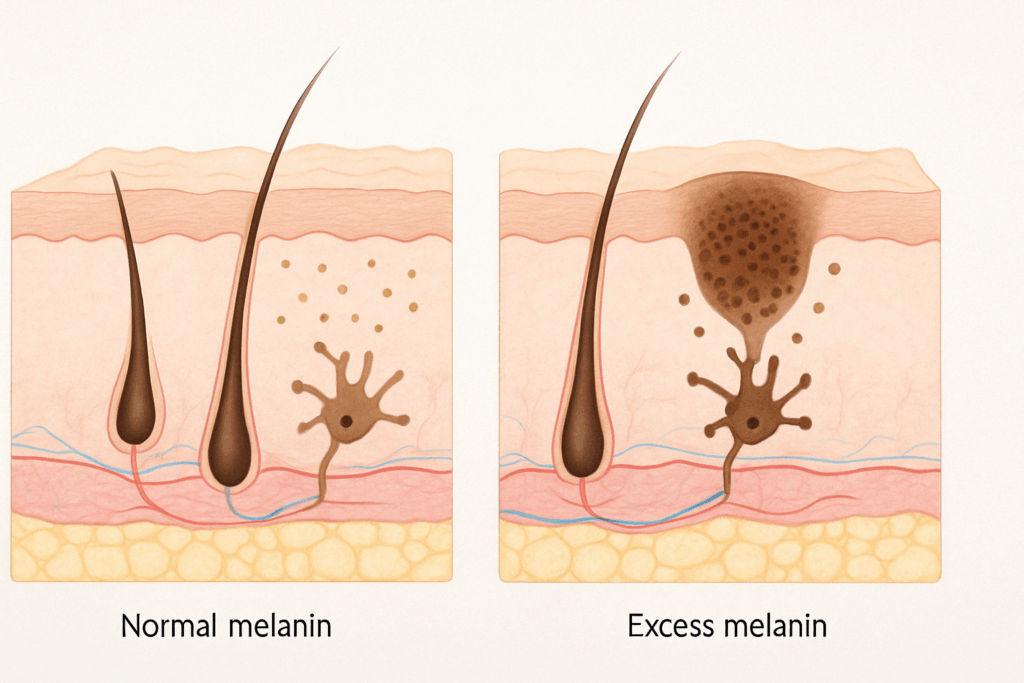
Understanding the Biological Basis of Dark Spots
Hyperpigmentation arises when melanocytes, the cells responsible for producing melanin, begin to deposit excess pigment in the skin. This can occur due to several triggers, including ultraviolet (UV) exposure, hormonal changes, inflammation, and skin trauma such as acne or minor cuts. The accumulation of melanin in the epidermal or dermal layers results in visible darkened patches that vary in size and intensity. While melanin itself serves a protective role against UV radiation, its overproduction can lead to aesthetically displeasing marks and uneven skin tone.
This condition is not inherently dangerous but can signal an underlying imbalance or exposure pattern. For individuals with darker skin tones, these spots can be more persistent and resistant to treatment due to higher baseline melanin activity. Addressing this issue, therefore, requires a nuanced, evidence-based approach that takes into account both the biological intricacies and the safety profile of therapeutic agents.
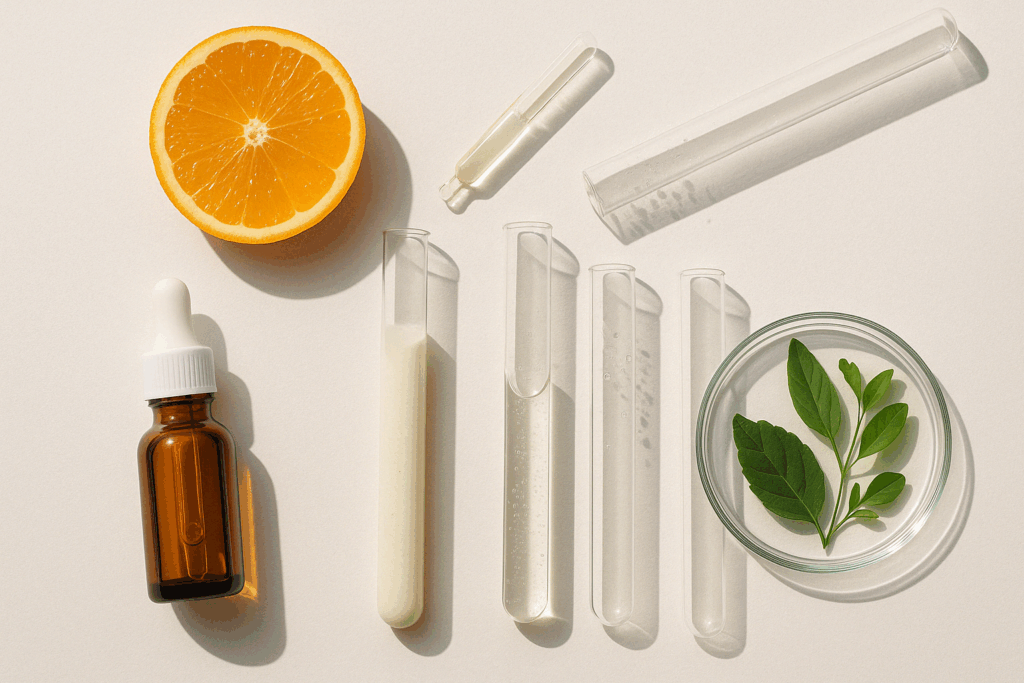
What to Look for in a Safe and Effective Dark Spot Corrector
When selecting a product designed to reduce hyperpigmentation, consumers are advised to look beyond marketing language and instead consider the active ingredients backed by dermatological science. A good cream for dark spots on the face should not only target melanin synthesis but also support skin regeneration and barrier repair. Ingredients such as hydroquinone, kojic acid, niacinamide, vitamin C, alpha arbutin, and tranexamic acid are frequently recommended for their depigmenting properties.
Hydroquinone, often labeled the gold standard, is a potent melanin synthesis inhibitor. However, it has come under regulatory scrutiny in several countries due to concerns about long-term safety and potential for ochronosis—a condition of paradoxical skin darkening. As a result, many brands are shifting toward botanical alternatives and gentler compounds that offer similar efficacy with reduced risk. Niacinamide, for instance, works by interrupting the transfer of melanin to keratinocytes, thereby gradually lightening dark marks without sensitizing the skin.
In choosing the best dark spot corrector for face and body, formulation matters as much as the ingredients themselves. Delivery systems that enhance skin penetration, such as liposomes or encapsulated serums, can significantly improve results. Furthermore, combining brightening agents with antioxidants and soothing botanicals may help mitigate irritation while enhancing the overall tone and texture of the skin.
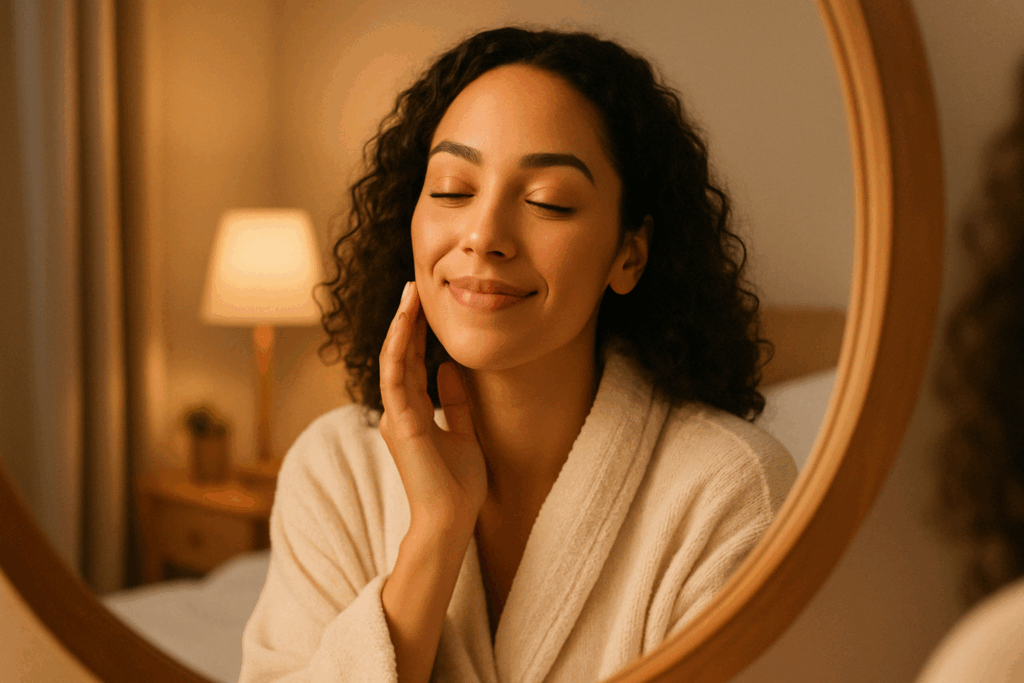
How Mental Well-Being Connects to Skin Appearance
The relationship between skin health and psychological wellness is deeply intertwined. Numerous studies have shown that visible skin concerns, including black marks on the face, can trigger or worsen anxiety, depression, and low self-esteem. In fact, dermatologists and psychologists alike have begun to acknowledge the bidirectional link between dermatological conditions and mental health, a field now referred to as psychodermatology.
This underscores the importance of integrating mental wellness into the conversation around skin care. A daily moisturizer that also removes age spots, for example, can offer more than surface-level improvements; it can help rebuild confidence and promote a sense of control over one’s appearance. Patients who use products that visibly improve their skin tone often report feeling more socially comfortable and optimistic, highlighting the therapeutic ripple effect of targeted skin care.
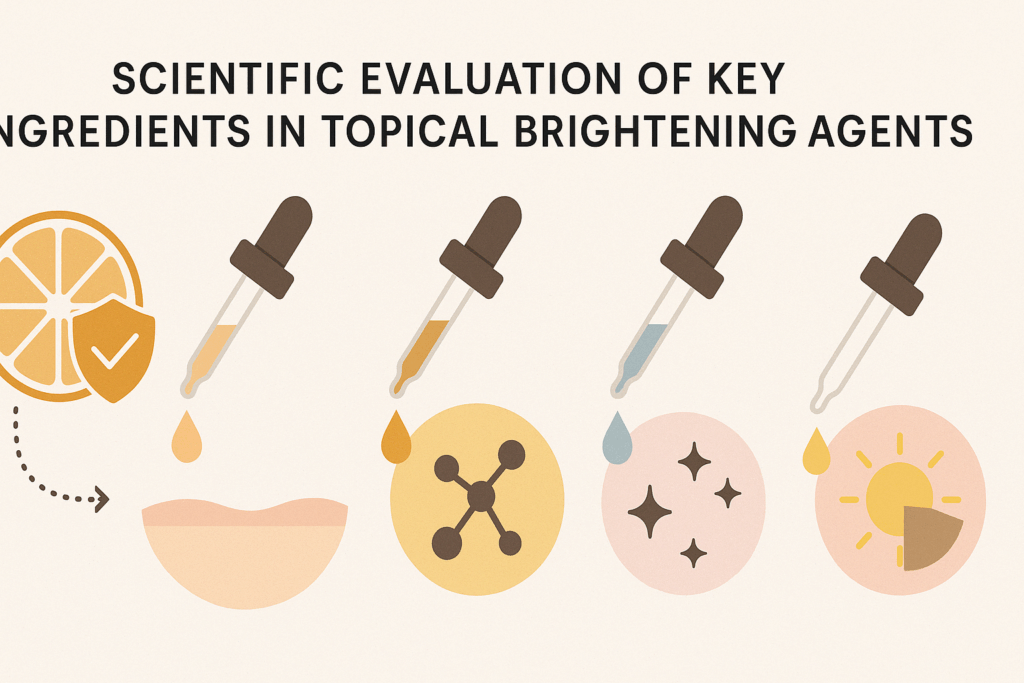
Scientific Evaluation of Key Ingredients in Topical Brightening Agents
Among the most extensively studied ingredients in skin-lightening products is vitamin C, known for its role in inhibiting tyrosinase, the enzyme that catalyzes melanin production. Ascorbic acid, the most bioactive form, is also a powerful antioxidant that neutralizes free radicals and supports collagen synthesis. When used consistently, it helps diminish dark patches while improving overall skin brightness and resilience.
Alpha arbutin, derived from the bearberry plant, is another effective compound shown to interfere with melanin synthesis without the cytotoxic effects sometimes seen with hydroquinone. Studies suggest that 1-2% concentrations of alpha arbutin, when used regularly, can yield visible improvements in discoloration within eight to twelve weeks. Similarly, tranexamic acid, originally used to treat bleeding disorders, has gained attention for its ability to calm skin inflammation and reduce melanin production by disrupting the plasminogen pathway.
The best dark spot serum often contains a cocktail of these actives in stabilizing formulations, enhanced by humectants and emollients that help maintain skin hydration. A moisturizer for dark spots is most effective when applied as part of a layered routine that includes sunscreen, as UV protection is critical to preventing new pigment formation and ensuring the longevity of results.
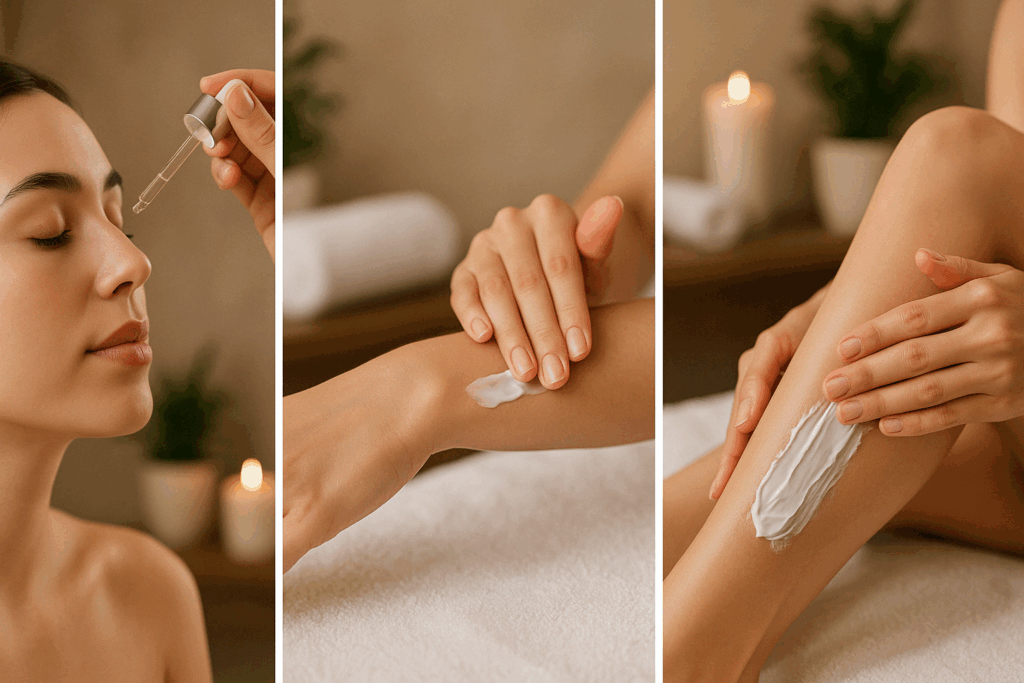
Understanding the Difference Between Face and Body Treatments
While many people seek a single solution for both facial and body hyperpigmentation, it is essential to recognize the structural differences between these areas. The face generally has thinner skin with more sebaceous glands, making it more prone to both irritation and rapid absorption. In contrast, areas like the back, legs, or arms may require richer formulations to penetrate thicker dermal layers and address more stubborn patches.
For individuals seeking the best cream to remove dark spots on legs or other parts of the body, texture and delivery become even more important. The best dark spot remover for body use will often contain higher concentrations of active ingredients along with occlusive agents that help seal in moisture. Products like black spot removal cream or black dark spot remover are often formulated with added exfoliants, such as glycolic acid or lactic acid, to accelerate skin turnover and promote deeper ingredient penetration.
Choosing a body-specific product, therefore, allows for better alignment with the unique needs of that skin region. It also reduces the likelihood of overexposing delicate facial skin to ingredients that may be too harsh or occlusive when used indiscriminately.
Spot Treatments vs. All-Over Brightening: Strategic Application Matters
One of the most frequent mistakes in hyperpigmentation treatment is the indiscriminate application of lightening products across the entire face or body. While moisturizers for dark spots can serve as all-over hydrators with added benefits, highly concentrated serums or creams, such as a dark spot corrector for face, should be applied with precision to prevent surrounding skin from becoming lighter than the target area.
Spot treatment for dark spots is most effective when applied after cleansing and before occlusive products like oils or thick creams. This ensures optimal absorption without dilution. In contrast, daily use of a good cream for dark spots on face as part of a broader skincare regimen can provide gradual, sustained improvements in overall skin clarity.
Individuals with darker complexions should exercise particular care with spot treatments to avoid hypopigmentation. This risk highlights the importance of using products tested for safety on diverse skin tones, as well as the value of consulting with a dermatologist when embarking on a new brightening regimen.

Consumer Trends and Emerging Innovations in Skin Brightening
With the growing demand for natural, safe alternatives to hydroquinone and steroids, the beauty industry has witnessed a surge in research into plant-based and peptide-based brightening agents. Licorice root extract, for example, contains glabridin, a compound shown to inhibit tyrosinase activity without causing irritation. Similarly, peptides such as oligopeptide-68 are gaining recognition for their ability to modulate melanin production through genetic signaling pathways.
Innovative delivery systems are also enhancing the bioavailability of key actives. Encapsulation technologies, including liposomes and nanoemulsions, allow for deeper skin penetration and sustained release, improving the efficacy of even low-concentration formulations. These advancements have been incorporated into many of the best beauty products for dark spots, making them more effective and better tolerated across various skin types.
In addition, environmental consciousness is shaping product development. Consumers are increasingly seeking cruelty-free, vegan, and sustainably packaged formulations that reflect ethical values without compromising on efficacy. Brands that succeed in balancing these demands with clinical-grade results are rapidly gaining market trust and dermatologist endorsements.
Integrating Brightening Products into a Comprehensive Skincare Routine
Using a dark spot eliminator or a brown spot corrector for face treatment is rarely sufficient as a standalone approach. True improvement comes from integrating these products into a consistent, well-structured routine. This often begins with gentle cleansing to remove debris and prepare the skin, followed by toner or essence to hydrate and balance pH levels. Active serums or creams that remove dark spots should be applied next, followed by moisturizers to lock in hydration and sunscreen during the day to protect against UV damage.
A daily moisturizer that also removes age spots provides a multifunctional approach, streamlining the routine for those with busy schedules or sensitive skin. However, layering remains key for maximum benefit. For instance, applying a face cream for black spots in conjunction with antioxidant-rich serums and exfoliants helps accelerate cellular turnover and enhances the visibility of results.
Patience and consistency are essential. Most users will not see dramatic changes overnight. Instead, gradual lightening, improved texture, and enhanced radiance emerge over several weeks or months of consistent use. The best fade cream for dark spots works subtly but steadily, with cumulative improvements that are maintained through ongoing care and sun protection.
Safety, Side Effects, and When to Seek Professional Help
Though many over-the-counter formulations are safe for regular use, not all dark spot corrector creams are suitable for every skin type. Individuals with sensitive skin, allergies, or underlying conditions such as eczema or rosacea should consult a healthcare provider before beginning any new treatment. Even the best dark spot corrector for face can cause irritation or adverse reactions if misused or applied without appropriate skin barrier support.
Patch testing is a recommended precaution before introducing a new cream to remove black patches on face or body. Apply a small amount behind the ear or on the inner forearm and observe for signs of redness, burning, or peeling over 48 to 72 hours. If no adverse reaction occurs, the product can be cautiously introduced into the broader routine.
For more persistent or widespread pigmentation, in-office treatments such as chemical peels, laser therapy, or microneedling may offer enhanced results. These interventions should always be performed by licensed professionals and supported with a tailored aftercare regimen, including products like best skin fade cream or best dark spot skin care options to prolong and maintain the benefits.
Frequently Asked Questions: Best Dark Spot Correctors for Face and Body
1. Can a daily moisturizer that also removes age spots be used on sensitive skin types?
Yes, but it depends heavily on the formulation. A daily moisturizer that also removes age spots should be free of harsh exfoliants or fragrances when used on sensitive skin. Ingredients like niacinamide, vitamin E, and allantoin are soothing and beneficial for individuals who experience irritation from more aggressive treatments. It’s wise to avoid high concentrations of acids or retinoids unless advised by a dermatologist, as these may exacerbate redness or dryness. Always patch test before introducing new products, even if the product claims to be the best dark spot corrector for sensitive skin types.
2. What makes a cream for dark spots on the face different from a dark spot remover for body use?
The skin on the face is thinner and often more reactive to ingredients, while the body’s skin is generally thicker and may require stronger formulations. A cream for dark spots on the face often includes gentler actives and enhanced hydration components to maintain the skin barrier. In contrast, a dark spot remover for body use may contain higher concentrations of exfoliants like glycolic acid or urea to better penetrate tougher areas like the legs or back. Additionally, black spot correctors designed for the body sometimes include occlusive agents like shea butter to improve ingredient absorption. It’s important to use body-specific treatments where appropriate, rather than assuming one formula fits all.
3. How long does it usually take to see results from a black spot removal cream?
Visible improvements generally take anywhere from four to twelve weeks depending on the severity of the dark spots, skin type, and consistency of application. A black spot removal cream that contains ingredients like alpha arbutin or kojic acid may show results faster if paired with sun protection. However, overuse or combining too many actives can lead to irritation, which may paradoxically worsen pigmentation. The best product for dark spots emphasizes gradual correction rather than quick fixes, aligning with safe dermatological practices. Remember, patience and a consistent routine are key.
4. Is there a difference between a dark mark remover and a dark spot corrector cream?
While the terms are often used interchangeably in consumer marketing, a dark mark remover typically refers to targeted treatments for post-inflammatory hyperpigmentation (such as after acne), whereas a dark spot corrector cream may have broader application including sun spots, melasma, and age-related discoloration. Spot treatment for dark spots often contains potent actives like tranexamic acid or retinol, which are best used directly on the affected area. The best dark spot corrector for face use will usually balance brightening agents with barrier-supporting ingredients to minimize irritation. It’s advisable to choose a product tailored to the specific cause of discoloration for optimal results.
5. Can I combine the best dark spot serum with other skincare products, or will it interfere with effectiveness?
Yes, in fact, combining the best dark spot serum with a well-structured skincare routine can enhance results, provided the ingredients don’t clash. For instance, a vitamin C-based serum can pair well with a daily sunscreen, amplifying both the protective and brightening effects. However, avoid layering strong acids or retinoids simultaneously unless you’re under dermatological supervision, as this may cause peeling or increased sensitivity. A face cream for black spots can be layered over a serum to lock in moisture and increase absorption. This complementary approach supports both pigment correction and skin barrier resilience.
6. Are there long-term risks in using the best cream to remove dark spots on legs or other body areas?
Long-term risks are minimal when using clinically tested products as directed, but misuse can lead to skin thinning, sensitivity, or rebound hyperpigmentation. This is particularly true for formulas containing hydroquinone, which has been banned in some countries due to safety concerns. Choosing the best cream to remove dark spots on legs means prioritizing options with plant-derived brighteners or peptides, especially for extended use. It’s also important to moisturize regularly, as repeated exfoliation may dry out the skin on legs and arms. Combining these creams with the best dark spot skin care routine ensures longer-lasting, safer outcomes.
7. How do I select the best beauty products for dark spots if I have both acne and pigmentation issues?
Look for dual-action formulas that address both acne and hyperpigmentation without compromising your skin barrier. A good cream for dark spots on face that includes salicylic acid and niacinamide can help regulate sebum while fading marks. Avoid overly occlusive ingredients or oils that may clog pores, especially in areas prone to breakouts. It’s also useful to alternate between a dark spot corrector for face application in the morning and a blemish-targeting treatment at night. The best dark spot cream in these cases should be lightweight, non-comedogenic, and supported by clinical studies.
8. What’s the difference between a moisturizer for dark spots and a spot treatment for dark spots?
A moisturizer for dark spots is typically designed for all-over use, delivering hydration alongside mild brightening agents like licorice root or alpha arbutin. Spot treatment for dark spots, on the other hand, delivers high-concentration actives directly to areas of concern, such as black marks or brown patches. Using both can be highly effective: moisturizers maintain skin health and prevent new pigmentation, while targeted spot correctors fade existing discoloration. When used in combination, they complement each other, enhancing the effectiveness of the best dark spot skin care regimen. Always apply the spot treatment first, followed by the moisturizer for best results.
9. Why do some people respond better to certain black dark spot remover products than others?
Response differences often stem from genetics, skin type, lifestyle, and the root cause of pigmentation. For example, individuals with Fitzpatrick skin types IV-VI may have more active melanocytes and thus require a more tailored black dark spot remover with lower irritation potential. Hormonal pigmentation (like melasma) may resist treatment more than sun-induced spots, requiring different ingredient profiles such as tranexamic acid or azelaic acid. The best product for dark spots on face is one that aligns with your skin’s unique behavior and tolerances. Customizing your routine is often more effective than simply choosing the most popular formula.
10. What innovations are shaping the future of best dark spot skin care products?
Emerging technologies such as encapsulated delivery systems and biomimetic peptides are redefining the landscape of best dark spot skin care. These innovations allow active ingredients to penetrate deeper without causing surface irritation, making treatments both more effective and gentler. Smart serums that adapt to environmental stressors or use pH-sensitive release mechanisms are also on the rise. The best skin fade cream in the future may not only lighten pigmentation but also support microbiome health and barrier integrity. Consumers can expect a growing number of multifunctional products that blur the line between skincare and dermatological therapy.
Conclusion: Choosing the Best Dark Spot Skin Care for Your Needs
Navigating the world of hyperpigmentation treatment requires both education and intention. While marketing often emphasizes quick fixes and miracle cures, scientific research paints a more nuanced picture: true skin brightening is a gradual, layered process that respects the biology of the skin. From a dark spot remover for body use to a daily moisturizer that also removes age spots, the effectiveness of these solutions depends on formulation quality, active ingredient synergy, and individual skin characteristics.
Consumers seeking the best product for dark spots on face or body should prioritize safety, evidence-based ingredients, and compatibility with their unique skin needs. Whether selecting a dark mark remover, a black spot corrector, or the best dark spot serum, the goal should not be flawless perfection but healthier, more radiant skin that reflects inner balance and wellness. Ultimately, the journey toward clearer skin is also a journey toward improved self-confidence, emotional well-being, and empowered self-care.
With advances in dermatological science and a growing appreciation for ethical, personalized beauty solutions, it is now more possible than ever to find a cream that removes dark spots without compromising skin integrity. By choosing wisely and caring consistently, individuals can embrace both the science and the self-compassion that define modern skincare success.
Was this article helpful? Don’t let it stop with you. Share it right now with someone who needs to see it—whether it’s a friend, a colleague, or your whole network. And if staying ahead on this topic matters to you, subscribe to this publication for the most up-to-date information. You’ll get the latest insights delivered straight to you—no searching, no missing out.
Further Reading:
14 Best Dark Spot Correctors, Recommended by Dermatologists
Murad Rapid Dark Spot Correcting Serum – Skin
Aloe Vera for Dark Spots on the Skin: Does It Work?
Disclaimer
The information contained in this article is provided for general informational purposes only and is not intended to serve as medical, legal, or professional advice. While Health11News strives to present accurate, up-to-date, and reliable content, no warranty or guarantee, expressed or implied, is made regarding the completeness, accuracy, or adequacy of the information provided. Readers are strongly advised to seek the guidance of a qualified healthcare provider or other relevant professionals before acting on any information contained in this article. Health11News, its authors, editors, and contributors expressly disclaim any liability for any damages, losses, or consequences arising directly or indirectly from the use, interpretation, or reliance on any information presented herein. The views and opinions expressed in this article are those of the author(s) and do not necessarily reflect the official policies or positions of Health11News.